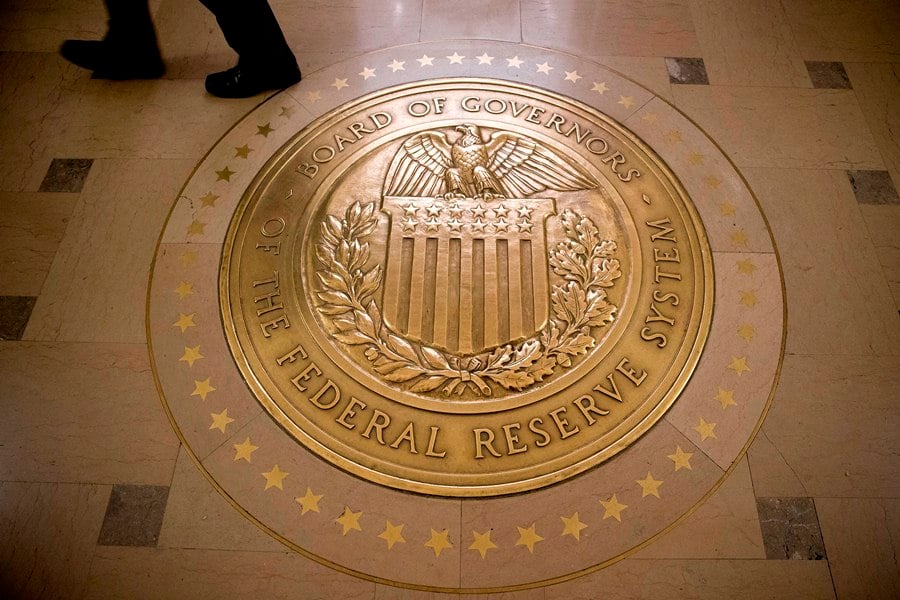

To the casual observer it might seem like the Federal Reserve was taken to the cleaners during its first round of bond fund purchases last month when it paid more than $20,000 worth of brokerage commissions on about $160 million worth of ETF purchases.
This came to light last week when the Fed followed through on its promise to be as transparent as possible during its unprecedented bond-buying program that is expected to total $750 billion worth of ETF and individual bond purchases over the next few months.
The natural assumption in this age of free trades everywhere might be that the Fed should have just opened a Robinhood account and saved taxpayers some commission charges.
The short answer is, it’s not nearly that simple when you’re buying bond ETFs by the truckload.
But the more detailed explanation behind the ETF trading commissions says something about the free trading offers that some financial advisers and investors might not be considering.
“The amount of money the Federal Reserve is investing in ETFs is sizable and they are buying in bulk seeking to get the best execution, have limited impact on the ETF and the bond markets and avoid front running,” said Todd Rosenbluth, director and ETF and mutual fund research at CFRA.
“Going on Schwab.com, Robinhood or another place to buy ETFs commission free is not an option for them,” he added. “While this is eye catching, the premium they are paying has merit.”
In essence, the merit that the Fed sought by paying relatively nominal commissions to have BlackRock oversee the massive block purchases across 11 exchange-traded funds on May 12, involves not tipping its hand to the broader bond market in a way that could further impact valuations and trading activity.
“The Fed is trying to get the best deal possible and be cognizant of the impact on the bond market,” Rosenbluth said. “There’s a fee to make sure these trades are executed in the right way, because if it were to leak out what they were buying and when, it could increase the price of the bond and also enable some investors to get in front of the trades.”
Athanasios Psarosagis, an ETF analyst with Bloomberg Intelligence, downplayed the total cost of the Fed’s trading of “about a penny and a half per trade,” and justified as a necessity of a program designed to support the U.S. economy with as little negative impact as possible.
Part of that is not using commission-free platforms, even if they were an option, he said.
“The platforms can offer free trading because they’re selling the order flow,” Psarosagis said. “Those free-trading platforms make their money by selling the order flow to a market maker.”
While there’s nothing illegal or even unusual about brokerage platforms selling order flow, it could be disastrous for the bond market and certain bond ETFs if trades the size of the Fed’s purchases were telegraphed to the market before and during the trading.
As Psarosagis explained, many of the free-trading platforms don’t have their own trading desks, so they set up arrangements with market makers to execute the trades. The platforms and the market makers will typically justify the practice of routing orders by claiming it creates larger orders that can lead to better prices.
That is often the case, according to Psarosagis, but it is not guaranteed.
“When the order flow is being sold, it can be harder to know what you’re paying or if you’re getting the best price,” he said. “If the Fed used one of those commission-free platforms, they might have paid more than going through a desk the way they did.”
For most individual investors and financial advisers executing trades for clients, it still makes sense to take advantage of the free-trading platforms, but it’s important to understand exactly how and why the trades are “free.”
“Individual investors should avoid paying commissions on ETFs, because there are platforms available,” said Rosenbluth. “But if you’re self-directed you’re not getting the benefit of advice. The Fed paid commissions because they are getting advice.”

AI is no replacement for trusted financial advisors, but it can meaningfully enhance their capabilities as well as the systems they rely on.

Prudential's Jordan Toma is no "Finfluencer," but he is a registered financial advisor with four million social media followers and a message of overcoming personal struggles that's reached kids in 150 school across the US.

GReminders is deepening its integration partnership with a national wealth firm, while Advisor CRM touts a free new meeting tool for RIAs.

The Texas-based former advisor reportedly bilked clients out of millions of dollars, keeping them in the dark with doctored statements and a fake email domain.

The $3.3 trillion tax and spending cut package narrowly got through the upper house, with JD Vance casting the deciding vote to overrule three GOP holdouts.
Orion's Tom Wilson on delivering coordinated, high-touch service in a world where returns alone no longer set you apart.
Barely a decade old, registered index-linked annuities have quickly surged in popularity, thanks to their unique blend of protection and growth potential—an appealing option for investors looking to chart a steadier course through today's choppy market waters, says Myles Lambert, Brighthouse Financial.
